|
Meetings are a powerful way to communicate, share knowledge and experience, trigger innovation, and take informed decisions. Yet, for many, attending meetings is a waste of time. That often happens because meetings are not well managed. If we take proper care of the three stages in a meeting process, our meetings can easily create high value and leave the participants satisfied. What are those three stages? And what should we consider in each stage? 1. Before. Preparing for a meeting is a critical success factor. Before we meet face-to-face (physically or virtually), consider the following actions:
a) Beginning: At this stage, the meeting leader should set a welcoming and encouraging tone, state the agreed purpose of the meeting and expected outputs, agree on the agenda, and define ground rules and roles. b) Engage. At this stage, the meeting leader should use strategies to promote wide engagement among the participants. A useful technique is to use open, overhead questions. The meeting leader should provide opportunity for all members to contribute and avoid a few monopolising the discussions. The meeting leader should listen actively to motivate the meeting participants. It is more useful if the leader listens more and speaks less. Otherwise, s/he will crowd out the opportunity for her/his colleagues to share their thoughts. c) Drill deeper. Once the various ideas and opinions have been brought to the table, the meeting leader should identify key issues and encourage the participants to explore those in depth. d) Close. At this stage, the meeting leader´s role is to summarise and document key points, conclusions, and way forward. The date for the follow up meeting, may also be decided at this stage. 3. After. Soon after the meeting, the leader should arrange for the preparation and circulation of the draft minutes of the meeting among the participants. After the deadline for receipt of comments, s/he should finalise the minutes and circulate once again, this time for information and action. Thereafter, it is important for the leader to monitor actions that were to be taken, to ensure that things happen on time and, obstacles, if any are managed efficiently and effectively. Meetings are unavoidable in an organisation. They are also powerful tools for organisational effectiveness and development. Simply because meetings happen often is no reason not to prepare for, and manage them, with care.
1 Comment
Logical framework analysis is a powerful participatory tool in planning capacity development projects. The output of this analysis is the log frame matrix. This document integrates two logics. An understanding of both is important for a proper use of the tool and preparing the log frame matrix. What are these two logics?
The primary logic is the vertical one. This demonstrates the expected value delivery chain: The required inputs, if applied correctly, will lead to the necessary activities; those activities, if managed properly, will produce the intended outputs; the outputs will, given the right conditions, create the anticipated outcomes; finally, the outcomes will, given other variable and in the longer run, contribute to certain impacts. This logic is referred to as primary because the primary objective of any project is to deliver value. The secondary logic is the horizontal one: Each stage in the vertical value chain will lead to the next stage only if certain risks/assumptions are properly managed. For example, take a road construction project close to wildlife habitats. All necessary inputs such as materials, labour, land, and government approval may be available. However, if the risk of environmental lobby groups preventing the construction of the road is not effectively managed, the road (planned output) may not materialise. Hence, this logic is no less important than the primary logic, even though it may be referred to as the secondary logic. As many be seen from above, a log frame has many elements: The elements in the vertical logic, the risks in the horizontal logic, as well as other elements such as success indicators, and means of verification. The question that arises is, "Which is the starting element when conducting a logical framework analysis?" To answer this question, we need to understand the primary responsibility of the project manager. His primary responsibility is to deliver a value that positively affects the lives of the beneficiaries and is yet significantly within his influence to create. Producing outputs is creating value, but outputs per se do not necessarily affect the lives of the beneficiaries unless they actually make use of them. For example, community toilets may be built in villages areas to improve hygiene and protect privacy of women, but if they are not used by beneficiaries for any reason, their lives will not be positively affected. On the other hand, impact level value has wide-ranging effects on beneficiaries and others. However, the nature and number of intervening variables between an outcome and the subsequent impacts are such that the project manager cannot reasonably be expected to influence them in any significant way. Thus the optimal value level that a project manager should be responsible for are the outcomes. Outcomes actually affect the beneficiaries ‘lives in a meaningful way, and at the same time are within the influence of the project manager to deliver if he manages the corresponding risks properly. That is why in log frame templates, the outcome is sometimes termed the project´s "purpose". This understanding helps us decide which value level should come first in a logical framework analysis: output, outcome, or impact? A fundamental principle of strategic thinking is to begin with the end in mind first. Since the project manager´s ultimate responsibility is to deliver the desired outcome, the logical framework analysis should start with a clear definition of the desired outcome. With that as the starting point, the project plan can plot other elements in the vertical value chain and the horizontal logic. Studies indicate that happy people are likely to be more productive at work. A good leader, therefore, uses ways and means to keep her people happy. A great leader, however, does not look upon her people as merely means to an end, as tools of production. Rather, she recognises her inseparable connection with them as living beings striving to be happy. Therefore, a great leader does not try to ensure happiness of her people merely to increase their productivity. Instead, she works to promote their happiness for the sake of their true well-being. To do that, she herself has to be happy. After all, how can an unhappy person create the conditions for happiness around them? The question that follows is one that has been asked by humans perhaps from the very beginning of human kind: How can we be happy?
First a caveat. I am not referring to a self-referential happiness wherein we aim to be happy without considering the welfare of others. It is a mistake to think that we can really be happy at the expense of the good of others. I am referring to a happiness that promotes the happiness of others or, at the least, does not increase their suffering. How can we find such happiness? Perhaps there are many paths that lead to it. For me, happiness is a skill that can be sharpened. The path I would like to share requires the regular training of the mind to be able to answer "Yes" to five questions. 1. Do I have an aspiration? An aspiration is not an ordinary desire. It is a desire to achieve something greater than and beyond oneself. Desires that are only for the benefit of one´s individual needs rarely bring lasting happiness. Why? Because it does not help to open up our hearts. And a heart that is closed knows no happiness. 2. Am I always diligent? Diligence is to put in one´s best, no matter what. It is walking that extra mile. It is to find joy in the journey itself rather than being too focussed on the end result. It is to do what we do with love. 3. Am I always kind? Are my words and actions motivated by considerations for the welfare of others? 4. Do I always think win-win? Are my negotiating strategies founded on a need for all parties to gain from the engagement? Or is it primarily based on a desire to win for myself, irrespective of the impact on the other parties? 5. Am I always grateful for the blessings in my life? It is difficult to imagine a life where there is not a single positive. However, due to our craving for more, some of us lose sight of the blessings in our life and spend our time focussing on what we lack. Consequently, we lose the opportunity to be happy with what we have, and remain unhappy with what we do not. I have learned that happiness (or suffering) is a choice. It results from how we choose to use our mind. Can you train it to genuinely be able to say "Yes" to the above five questions? We are willing to follow only those we trust. An "untrusted leader" is practically a contradiction in terms, isn´t it? Irrespective of what leadership qualities we possess, they will come to almost nothing if we are not perceived as trustworthy. "No trust" is basically equal to "no genuine connection". Hence, establishing trust and connection is a foundational requirement for any leader, coach, and facilitator. How, then, can we build trust and connection?
Pioneering psychotherapist Carl Rogers set out three requirements for trust to happen: Congruence: The aspiring leader must demonstrate consistency between her words and actions. She must walk her talk. Empathy: The aspiring leader must develop the ability to understand how others are feeling. He must not only walk his talk, he also has to able to walk in in the shoes of others and know where the shoes pinch. Unconditional positive regard: The aspiring leader may criticise the words and/or actions of another, but she should have a general positive regard for the person that is independent of their words and actions. She may point to flaws in the others´ shoes and even suggest they discard it, but never discard the person wearing the shoes. This perhaps is the most challenging leadership attitude to develop. We are often so conditioned to judging a person by their words and behaviours, instead of restricting our judgement to those words and behaviours. The way we communicate can also have a major impact on whether we build trust or destroy it. More than 2500 years ago, a wise man named Siddhartha Gotama recommended that skilful speech should possess five qualities. I believe those qualities, if present, can ensure that we easily earn the trust of others. Those are: True: He suggested that we speak only that is true. Do not lie, whether for our advantage or for the advantage of others. Trust built over years can fall apart with a single lie discovered. Timely: Speaking the truth does not mean blurting out any truth that is on one´s mind. The content of our communication should be timely and relevant to the context and sensitivities of others. Purposeful: We should be conscious of the purpose of what we are about to say. Is it necessary? Is it likely to be helpful? Gentle: This refers to the tone and manner of our communication. Is our communication free from harshness? Kind: This refers to the motivation underlying our communication. Is it motivated by kindness or is it motivated by malice? Kindness builds trust, malice damages it. The above are qualities and skills that are not difficult to develop if we put our mind to it. That does not mean we will become perfect in them. Perfection is not the issue. What is important is to walk the path sincerely. And every journey, no matter how long, begins with a single step. There are only two requirements for success on this path: to start walking, and to keep walking. Cheers. A few years ago, a colleague from Namibia presented a scientific formula during his session. That got me thinking: What about a formula for effective facilitation? Could I construct one? After reflecting on it overnight, I was able to distil my years of facilitation experience into a formula that I have discovered to be rather useful. Henceforth, whenever I design facilitation sessions for any kind of event, it helps me ensure that my design covers all the key dimensions necessary for the sessions to be effective and empowering. So, what is that facilitation formula?
T1 EF = (WE+DE+SF) T2 Empowering facilitation (EF) has five key elements as show above: Wide engagement (WE), Deep exploration (DE), Steady focus (SF), Trust in the facilitator (T1), and Facilitator´s trust in the audience. So whenever I design a facilitated event, I provide for questions, techniques, and tools that maximises active engagement of the people in the audience. I also provide for structured opportunities for deep thinking and exploration by them of the key issues. Even while there is wide engagement and deep exploration, I ensure that the audience remains focused on the explicit objective of the session; that means we have to get agreement upfront on the desired objective of the session. If we can get wide engagement of the audience, promote deep exploration, and maintain steady focus, our sessions will invariably be effective and empowering. However, there are two critical elements, without which that is not likely to happen. Those two elements are the audience´s trust in the facilitator (T1), and facilitator´s trust (T2) in the capacity of the audience. If we are unable to earn the trust of the audience, they will not be interested in engaging with us. On the other hand, if we, as leader-facilitators, do not have innate trust in the ability of the audience to think for themselves and generate ideas and solutions relevant to their context, then we might as well not facilitate. How do we earn trust? Perhaps that will be the subject of another post. So there you are: My “formula” for effective and empowering facilitation. Do you use one? The term "facilitation" originates from the Latin word "facilitas", which means to make easy. A common definition of a facilitator´s role is to make easy the process of achieving a desired objective. From my perspective, this is only the immediate objective of facilitation. the ultimate objective of facilitation is far bigger and much more inspiring. It is to empower the people and organisations we work with. What do I mean?
Every time an empowering facilitator makes easy the process of achieving a desired goal, she does not focus just on the destination. She focuses equally on the process used to reach the given end. She facilitates the participants to think on their own, and learn from each others´ knowledge and experiences. She avoids the participants becoming dependent on her. Instead, she uses processes to strengthen the overall capacity of the participants to find solutions by themselves, no matter what issue they may be facing. By the time she has finished facilitating for a team or an organisation, she achieves two things: (1) enable the group to reach their immediate desired destination, and, more importantly (ii) enhance their ability and confidence to effectively manage on their own, now and in the future. The latter is what makes learning and growth sustainable. What are your thoughts on the issue? What has been your experience? In an earlier blog titled "What is your listening to telling ratio", I wrote about the importance of active listening to be effective leaders, managers, coaches, and facilitators. Here, I would like to share some of the specific active listening skills that we can use to strengthen our listening ability. Implementing the following tips will ensure the speaker feels heard by you:
The best way to sharpen a skill is to practise it. So, try out the above tips the next time you meet someone and experience for yourself how they work. Do share your experiences here, so that we may learn together. Giving feedback is an inescapable responsibility of leaders, managers, coaches, and facilitators. Used skilfully, it can promote growth and development of the receiver. Used unskilfully, it can trigger defensiveness, anxiety, and drop in performance. So how can we offer feedback effectively?
Before I offer feedback, I like to keep three principles in mind: Encourage, Educate, Empower. Asking myself the following questions helps me apply these principles. Encourage: Will what I am about to communicate encourage the receiver to keep an open mind? Will it put him in a positive frame of mind? Will it make him feel confident and capable? Educate: Will it reveal blind spots that she was not aware of? Will it make her aware of strengths she did not know she possessed? Will it make her aware of potential areas of improvement to keep growing? Empower: Will it prompt him to think for himself and find his own way forward? Following are some specific actions I try to take, to ensure alignment with the above three principles. Encourage:
How do you offer feedback? How would you like to? The power of questions has been known for a long time. In the words of Jonas Salk, developer of the polio vaccine, "What people think as the moment of discovery is really the discovery of the question." It is not that "The wise man doesn't give the right answers, he poses the right questions," said Claude Levi-Strauss. Albert Einstein said, "The important thing is not to stop questioning. Curiosity has it own reasons for existing." In philosopher Jiddu Krishnamurti´s words, "To ask the right question is far more important than to receive the answer." And one of the famous innovators of today, Elon Musk said, "I think that´s the single best piece of advice: Constantly think how you could be doing things better and questioning yourself."
In our world of rapidly advancing information technology, finding answers is possible almost at the click of a mouse. However, to get useful answers we must first ask the right question. And technology is not much help in formulating that right question. That ability remains the prerogative of us human beings. Fortunately, it is a skill and we can sharpen with practice. Questions can help us in many ways:
Would you like to harness the power of questions? If yes, consider asking yourself, "What is my guiding question for the day? In 1998 when I was training as a facilitator, a quiet Sri Lankan friend of ours said, "We have two ears and one mouth because we should listen more and talk less." That wonderful lesson has stuck to me ever since. I must confess that I have much to improve in this aspect. However, my experience as a facilitator has only served to confirm my friend´s statement.
I have asked myself numerous times, "What are the key skills of an empowering facilitator and coach?" Over the years, I have narrowed that down to a few fundamental skills. At the top of that list is the skill of listening. Listening may be divided into two categories: Passive and active. The primary purpose of passive listening is to gather information from the speaker. In active listening, however, that is only one of the many purposes. Active listening aims to validate the speaker, promote empathy, enhance trust and connection. It also helps the facilitator to decide what would be the appropriate follow-up questions. And by helping the speaker articulate her/his thoughts, active listening stimulates deeper reflection and learning. While listening actively, a facilitator engages at two levels: Listening to what is being said, and listening to what is not being said. That allows the facilitator to get a more comprehensive understanding of the speaker´s message than simply listening for content would allow. As facilitators know, facilitation is not about providing instant answers and ready-made solutions. It is not about dazzling the audience with the facilitator´s knowledge. An empowering facilitator encourages the people to dive deep within and find their own answers and solutions. A powerful facilitator unleashes the wisdom hidden in the hearts and minds of the participants. This requires powerful questioning skills (perhaps the subject of another post). However, once a question has been delivered, the facilitator has to listen actively if deep reflection and learning are to occur in the participants. While coaching, it is said by some that the listening to telling ratio should be around 80:20. Coaching is one arena of facilitation. Depending on the facilitation arena, this ratio will vary. But the "golden rule" would still be the wisdom expressed by my Sri Lankan friend: Tell less and listen more. A useful exercise to develop our listening skills is to be aware before we speak. Whenever we intend to utter a statement, we can ask ourselves, "Would it be more empowering to convert this statement to a question?" The more we make this conversion, the more we will offer the participants the opportunity to think and speak for themselves. In turn, we as facilitators will focus more on listening and, thereby, empower the participants. So, would you like to ask yourself, "What is my listening to telling ratio?" |
Pritom PhookunCapacity Development Facilitator ArchivesCategoriesArchives |
Empower By Design, Pilestredet 53A, 0350 Oslo, Norway. Organisation#998584213
Site powered by Weebly. Managed by FreeLogoServices.com
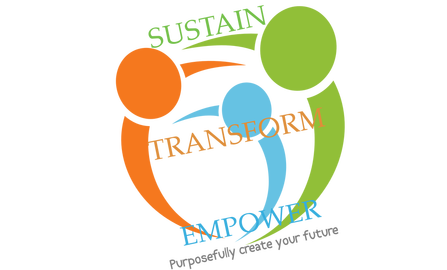

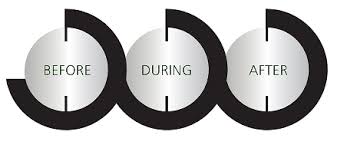
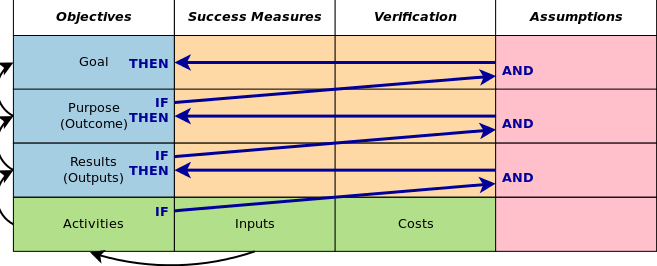
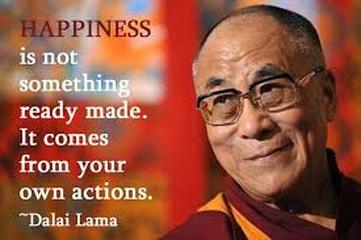
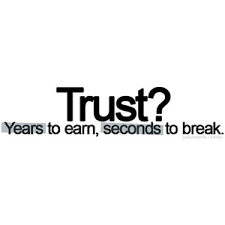

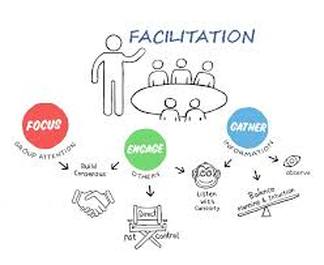

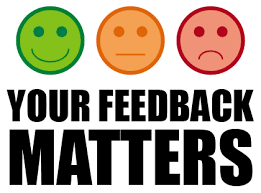
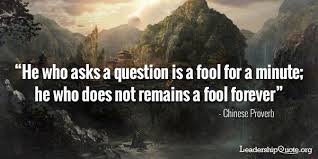
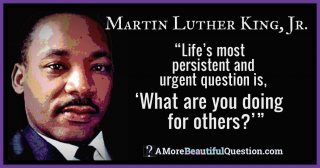
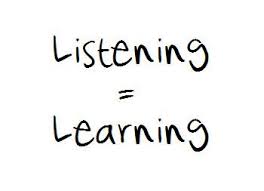
 RSS Feed
RSS Feed